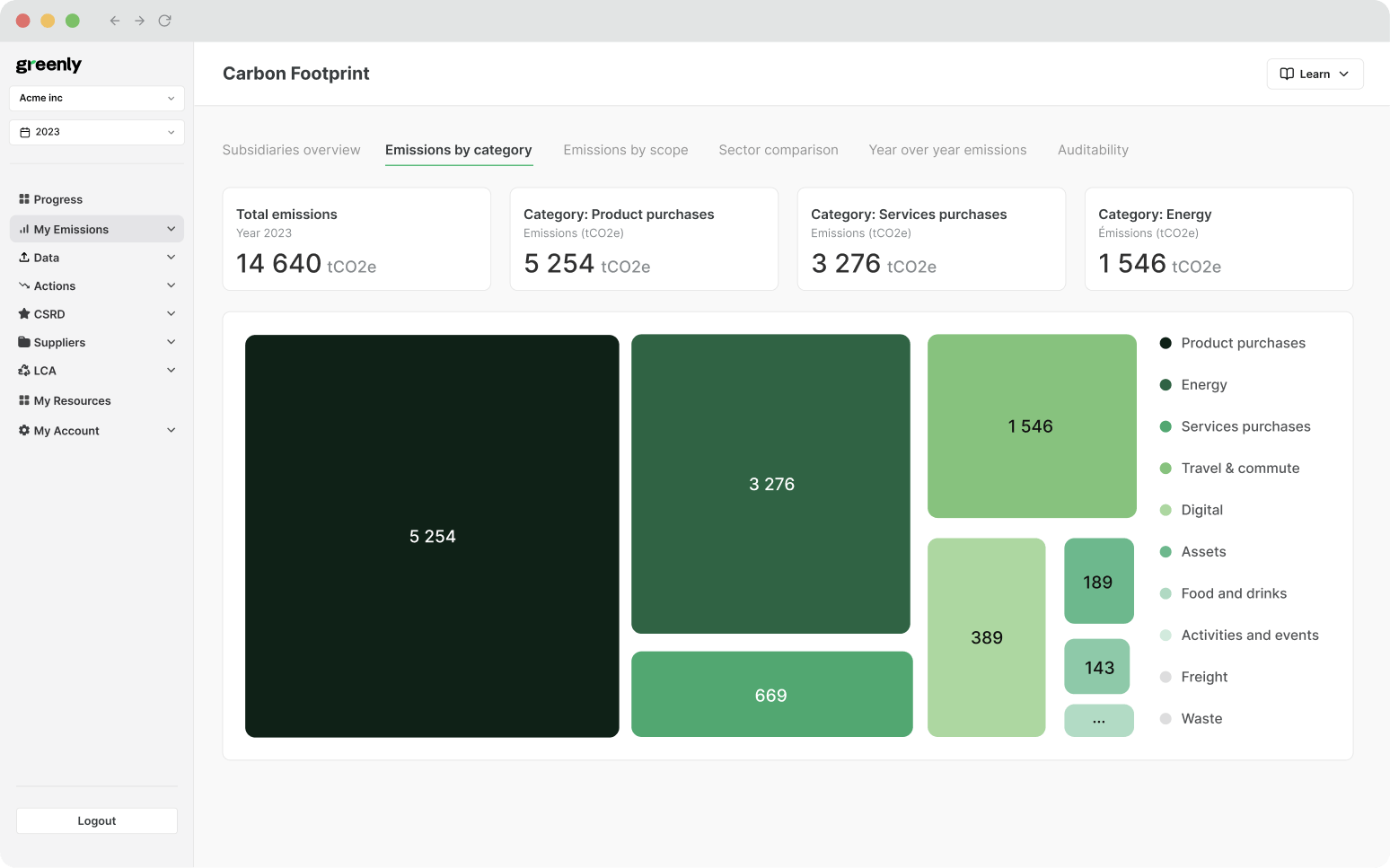
What are the 3 Pillars of Corporate Sustainability?
In this article, we'll explore what the 3 pillars of corporate responsibility are, why they're important, and how businesses can turn them into practical action.
ESG / CSR
Industries



Explanation of what fugitive emissions are
What a fugitive emissions test is and its importance
The downsides of fugitive emissions and how to mitigate them
Between carbon emissions, greenhouse gas emissions, and fugitive emissions – it can be difficult to keep track of these different air pollutants and how they affect our everyday lives.
Fugitive emissions refer to accidental emissions, such as when you’re boiling a pot of water and make the kitchen more humid by default – even if it wasn’t the intention.
However, unlike most modern day kitchens where a ventilation system can help to soak up the extra moisture created by boiling a pot of water – getting rid of fugitive emissions aren’t nearly as easy.
In this article, we’ll explain what fugitive emissions are, examples of fugitive emissions, and how we can work together to stop fugitive emissions.
Fugitive emissions are unintentional emissions, often created by leakage or discharge of vapors and gasses released into the atmosphere from various industrial processes – such as in the processing, storage, and transportation of fossil fuels.
Fugitive emissions contaminate the surrounding air, leading to worsened air pollution – which is challenging to undo as fugitive emissions come from a nonpoint source and are difficult to detect.
Think of fugitive emissions in the same vein as an actual fugitive – someone who is on the run, who is being sought after by the police: but has little to no way to be tracked or found
Fugitive emissions can come from several different components inside an active power plant, such as:
Common leak points due to worn seals or faulty fittings that allow gases to escape into the atmosphere.
Joints between pipes where small gaps or damaged gaskets can release fugitive emissions over time.
Pump seals can degrade from pressure or temperature changes, causing methane or VOC leaks.
Emissions can occur from vents, hatches, or pressure relief valves in storage tanks containing volatile substances.
Compressors handling gas streams may leak through seals, connections, or worn components.
Small but numerous components—when improperly tightened or aged—can collectively release significant emissions.
Companies and individuals alike should be concerned about fugitive emissions as they contribute to global warming, impact our health, and can have an economic impact on your business.
The most challenging component of fugitive emissions is their inability to be quantified, as these emissions are never released on purpose – but as a byproduct of intense industrial activity.

A fugitive emission test is a process of testing for harmful gasses, vapors, or other qualified fugitive emissions from a source – such as an industrial production site or even for the average commuter vehicle.
The main goal of conducting a fugitive emissions test is to ensure that a piece of equipment or vehicle as a whole will not contribute to excess fugitive emissions, helping the country, state, or even county maintain an adequate level of air quality.
Additional goals of conducting a fugitive emissions test include:
The U.S. Environmental Protection Agency (EPA) also requires fugitive emissions testing under laws such as the Clean Air Act – serving as an effort to reduce emissions and improve air quality.
Numerous methods can be used to identify fugitive emissions, such as by using ultrasound cameras, ambient air monitoring, and sniffer devices.
Here’s a breakdown of the various methods used to determine the source of fugitive emissions:
One of the most well-known methods to detect fugitive emissions, Optical Gas Imaging (OGI) uses specialised cameras to find leaks – such as to determine the source of excess methane and volatile organic compounds (VOCs).
In the same way that detection dogs in the airport will try to sniff out your bag for explosives or other illegal items, sniffer devices are handheld detectors that can measure the concentration of a specific gas.
Through the use of soundwaves, ultrasonic detection devices can determine highly pressurised leaks.
A low-tech, affordable way to check for fugitive emissions is to use a soap solution on a piece of equipment to visually identify leaks – as bubbles will form if there is a leak in the machinery.
Businesses looking to audit their efforts to identify fugitive emissions can strive to follow the ISO 15848 standard, which qualifies the procedures conducted to verify fugitive emissions tests and determines how valve and body seals can prevent leaks and mitigate fugitive emissions.

While fugitive emissions can take on many different forms, such as in aerosols, dust, and fine particles – but the most intense fugitive emissions are greenhouse gasses such as methane and refrigerants.
The most common source of fugitive emissions are faulty valves, pumps, and piping systems – of which will often unintentionally release harmful refrigerants and methane emissions in the atmosphere, impacting our ozone layer.
Examples of greenhouse gasses and volatile organic compounds that may be detected in a fugitive emissions test include:
A potent greenhouse gas that traps heat in the atmosphere and is often released from oil and gas operations, landfills, and agriculture.
The most common greenhouse gas produced by burning fossil fuels such as coal, oil, and natural gas.
Man-made gases used in refrigeration and air conditioning that have high global warming potential when released into the atmosphere.
Organic chemicals that evaporate easily and contribute to air pollution and ground-level ozone formation.
Used as an insulating gas in electrical equipment — it has an extremely high global warming potential and long atmospheric lifespan.
Emitted from agricultural activities and combustion processes, it significantly contributes to global warming and ozone depletion.
The table below will explain how these different fugitive emissions impact the environment:
| Fugitive Emission | Environmental Impact |
|---|---|
| 🔥Methane | Methane is a potent greenhouse gas, approximately 25 times more effective than CO₂ at trapping heat over 100 years. It contributes to global warming, and its leaks from oil, gas, and agriculture sectors accelerate climate change. |
| 💨Carbon Dioxide | CO₂ is a primary greenhouse gas responsible for global warming. Fugitive emissions from industrial processes and fossil fuel combustion increase atmospheric concentrations, leading to rising global temperatures and ocean acidification. |
| ❄️Hydrofluorocarbons (HFCs) | HFCs are synthetic gases used in refrigeration and air conditioning with high global warming potential (GWP). Even small leaks have significant climate impacts, as HFCs can be thousands of times more potent than CO₂. |
| 🧪Volatile Organic Compounds (VOCs) | VOCs contribute to ground-level ozone (smog) formation when they react with nitrogen oxides in sunlight. This degrades air quality, harms respiratory health, and damages crops and ecosystems. |
| ⚡Sulfur Hexafluoride (SF₆) | SF₆ is a potent greenhouse gas with a GWP over 23,000 times that of CO₂. Used in electrical equipment, its leaks have a long atmospheric lifespan, making it a significant contributor to climate change despite low quantities. |
| 🌍Nitrous Oxide (N₂O) | N₂O is emitted from agricultural activities, fossil fuel combustion, and industrial processes. It contributes to both global warming and the depletion of the ozone layer. |
Fugitive emissions are most frequently found in the oil and gas industry, coal mining, and other various industrial operations.
Here are the two main examples of fugitive emissions sources:
Methane can escape pipes, compressors, and valves in transportation and processing industries. In addition to this, methane is a by-product of coal formation – which is one of the reasons why companies like Apple will try to enable sustainable minerals to manufacture their electronics.


Air conditioning systems and other refrigeration devices are increasingly being normalised around the world as global temperatures heat up, but the issue with this is that hydrofluorocarbons (HFCs) can leak and exacerbate climate change.
Additional examples of fugitive emissions include sulfur hexafluoride (SF₆) from electrical switchgear and nitrous oxide from wastewater treatment plants.

Fugitive emissions are a major concern for the planet seeing as they are undetectable emissions and exacerbate the current climate crisis.
As fugitive emissions have a higher potential to warm our planet, with VOCs contributing to ground-level ozone and methane emissions being able to trap 100 times more heat than carbon dioxide emissions.
Here are some more reasons why fugitive emissions are bad for the planet:
Efforts like the Paris Climate Agreement can struggle if hard-to-detect fugitive emissions persist worldwide.
Nations may need to regularly adjust climate legislation because sources of fugitive emissions are difficult to pinpoint.
Our global economy depends on transport; rising unchecked emissions can force cutbacks to reduce pollution.
VOCs encourage ground-level ozone, worsening air quality and health outcomes.
Methane and other leaks can heat oceans and pollute water/soil, harming surrounding biodiversity.
Persistent leaks increase monitoring, repair, and reporting costs as companies scale detection programs to stay compliant.
Luckily, there are many methods and devices that can be used to monitor and manage fugitive emissions – such as by employing stricter regulations and utilising leak detection and repair (LDAR) devices.

We can combat fugitive emissions by encouraging companies to better monitor and manage leak detection, requiring fugitive emissions tests, and seeking to develop more innovative and efficient equipment design.
The interactive flip cards (move cursor over card to flip) will reveal some ways we could stop fugitive emissions:
Ultimately, fugitive emissions will be one of the more difficult challenges in the fight against climate change – but by employing stricter emission regulations and monitoring leaks in their earlier stages, we can successfully mitigate fugitive emissions.
At Greenly, we're committed to fighting against fugitive emissions and much more – take a look at some of success in sustainability so far in our video below:
If reading this article on fugitive emissions has made you interested in reducing your carbon emissions to further fight against climate change – Greenly can help you!
It can be overwhelming to figure out how to effectively reduce your company's fugitive emissions as they can be challenging to identify, but don’t worry – Greenly is here to help. Click here to schedule a demo to see how Greenly can help you find ways to ensure your company is complying with all current and future environmental regulations.
Greenly can help you make an environmental change for the better, starting with a carbon footprint assessment to know how much carbon emissions your company produces.
